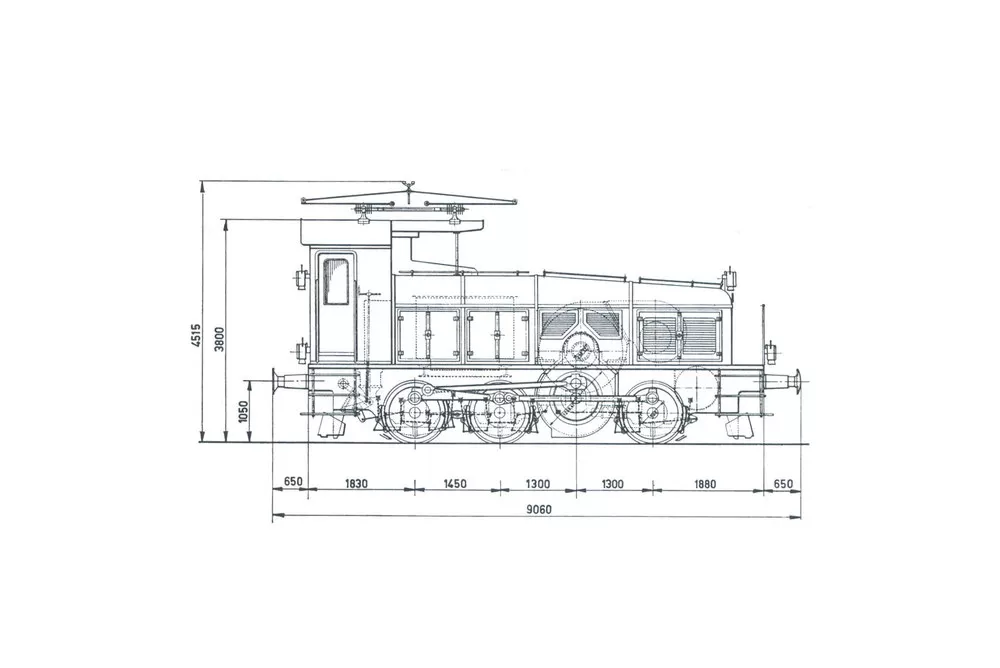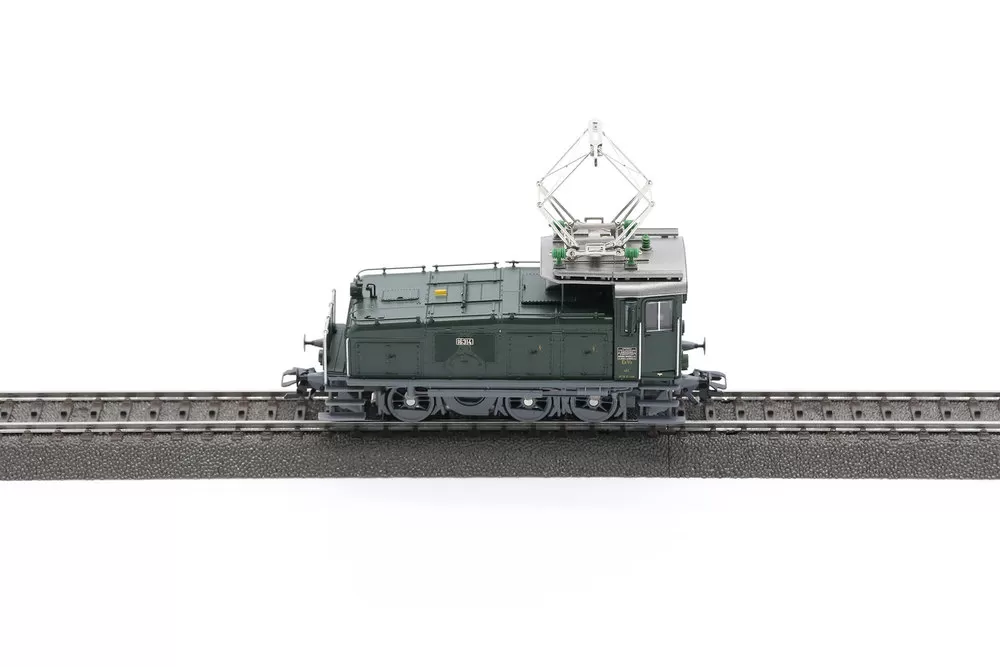
Source : commons.wikimedia.org
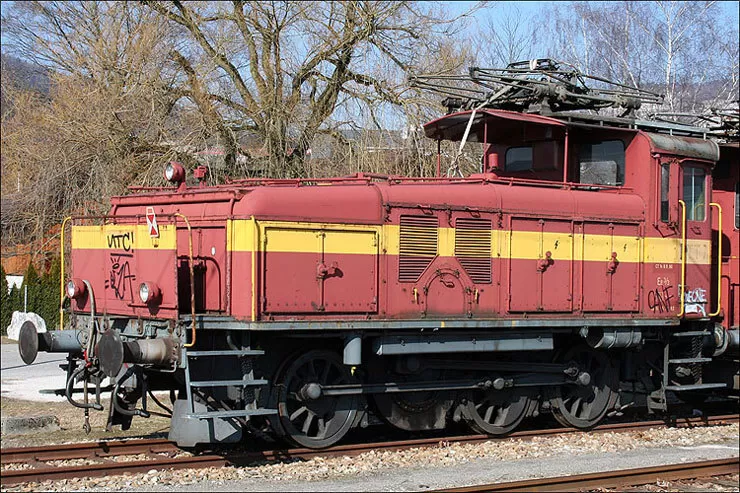
Source : le-rail.ch
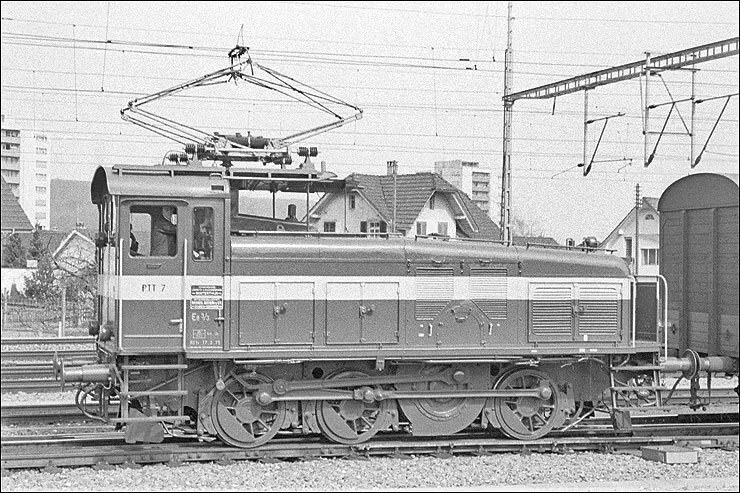
Source : le-rail.ch
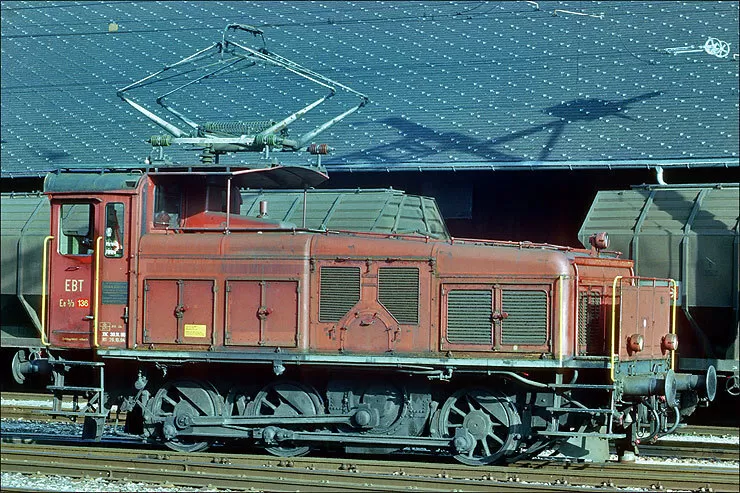
Source : le-rail.ch
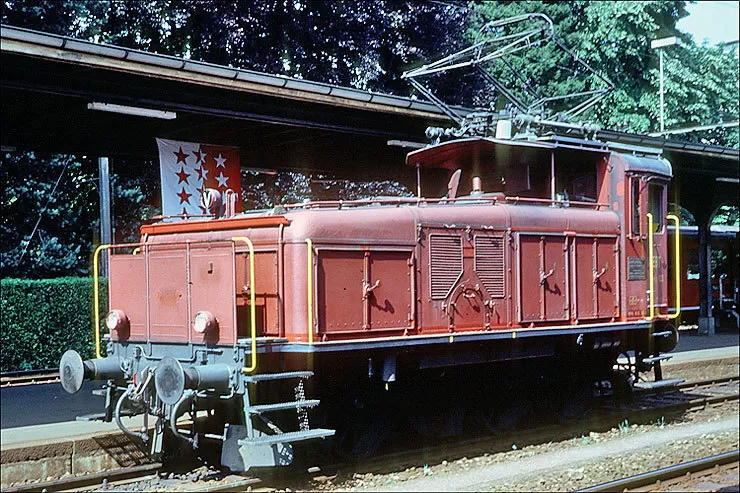
Source : le-rail.ch
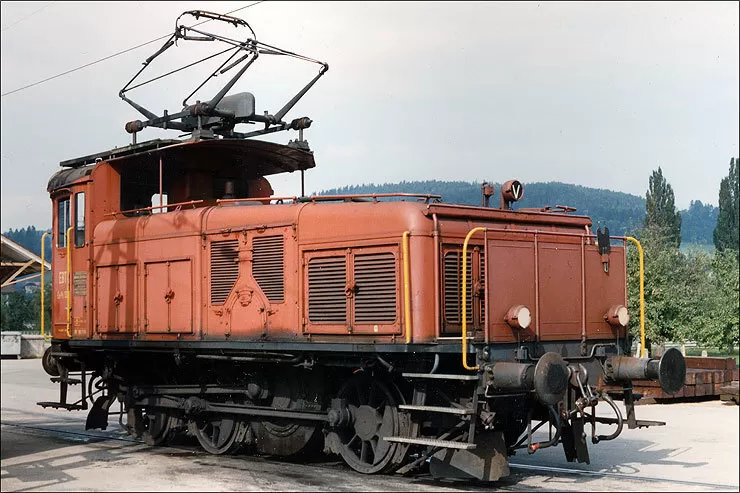
Source : le-rail.ch
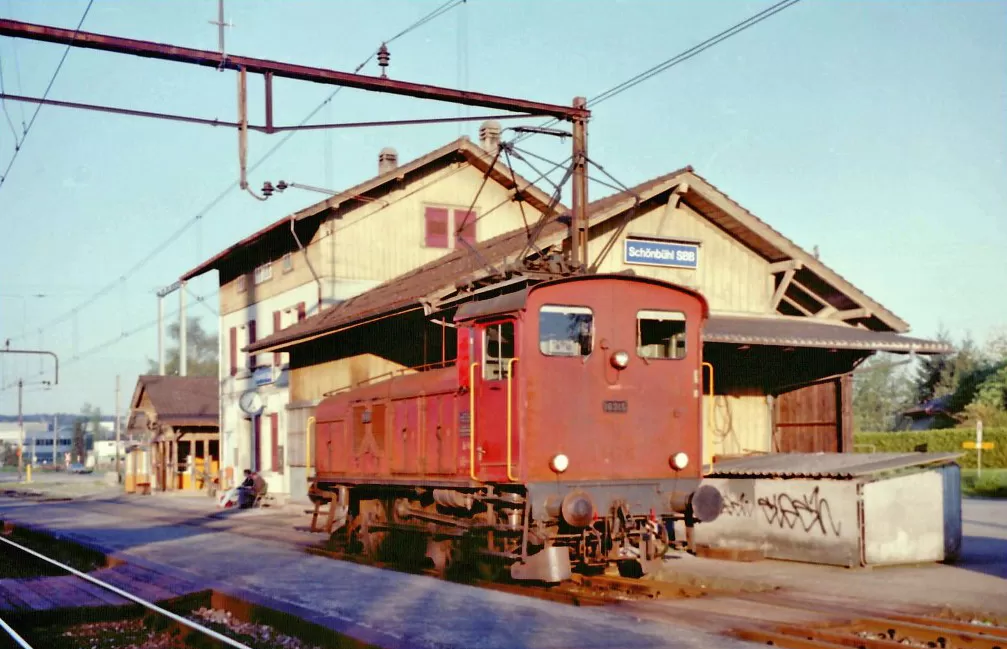
Source : Stefan Wohlfahrt

Source : Hurni Christoph
Type de véhicule:
Pays d'immatriculation:
Increasing electrification of the Swiss railroad network pointed up
a need for electric switch engines. Compared to steam locomotives
electric switch engines were ready to run without a lot of
preparation time and only required power when they were actually in
operation.
After two prototypes (Ee 3/4) were taken into operation in 1923,
the SBB purchased a first series of 16 units starting in 1928 from
SLM and BBC. These three-axle units could be produced without a
pilot wheel set due to technical progress in lowering the weight of
their components.
They had a cab at one end of the locomotive, which together with
the rather extended roof quickly acquired the more or less
affectionate nicknames "Flat Iron" or "Casual Shoe".
A characteristic feature was its Winterthur diagonal drive with a
jackshaft driving powered by the traction motor and connected to
the driving wheels by side rods. High levels of tractive effort
could be realized by the wheel sets connected together without
individual axles slipping. This concept was also used at that time
on faster locomotives, but its real strength was in those
situations where it was a matter of high levels of tractive effort.
These locomotives were controlled by a flat sliding step switch
with thirteen speed levels that controlled the voltage at the
traction motor.
These quaint switch engines were gradually retired starting in
1980. At the end of 1997, the last five units of the existing Ee
3/3 of this series still on the SBB were taken out of service. The
"Casual Shoes" sold previously to private operators held on several
more years until around 1995/96. Several units remained preserved
such as road number Ee 3/3 16318 at Locorama in Romanshorn and road
number Ee 3/3 16311 at Swisstrain.
1977
Concerne le(s) numéro(s) d'immatriculation: 16311
1980
En 1992, les EBT Ee 3/3 132 & 133 sont rebaptisées Ee 3/3 135 & 136 tandis que la VHB Ee 3/3 151 est mise à la ferraille. Elles ne sont utilisées que pendant quelques années : 136 est mise à la ferraille en 1993 et 135 subit le même sort en 1996.
Concerne le(s) numéro(s) d'immatriculation: 16312, 16322, 16323
1981
Concerne le(s) numéro(s) d'immatriculation: 16318
Avez-vous des informations supplémentaires concernant ce véhicule?
Aidez-nous à écrire l'histoire de Ee 3/3 16311 - 16326! Votre savoir est précieux pour nous et pour toute la communauté, n'hésitez pas à partager vos faits, photos ou vidéos:
Sources: le-rail.ch
Dernière mise à jour le 11th de March 2018 à 19:07
Contributeur(s): Tudor C.
Forum de discussion

